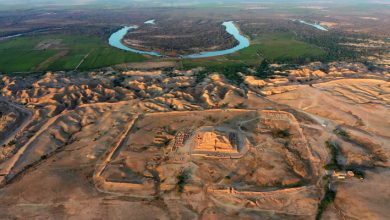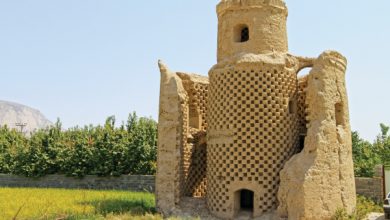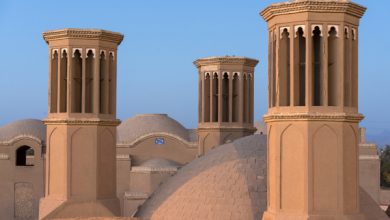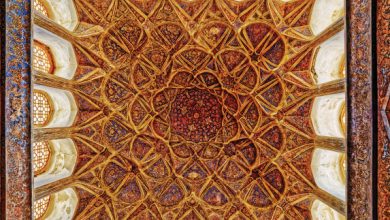
Sustainable development, as a broad definition, is the supplier of the current generation’s requirements without damaging the resources needed for current and future generations. Certainly, forests and vegetation play an important role in this regard. Sustainability pays special attention to the protection of Earth, and as a result its vegetation. Because forests are the main producers of oxygen in the atmosphere and are essential for the survival of living creatures on Earth, the concept of sustainable forests has become a center of attention in recent years.
The forests of northern Iran, also called Hyrcanian forests, have unique ecological properties, making them an important target for conservation and the implementation of the “sustainable forests” concept. Its characteristics include the only humid forests in Iran (Hyrcanian), a very limited range (compared to the rest of the country which is mainly arid and semi-arid), antiquity, diversity of plant and tree species and ecological properties.
The Hyrcanian forests are stretched like a narrow band of 80 km with a width of maximum 70 km (in central Mazandaran) and minimum 13 km (in western Mazandaran) in the provinces of Gilan, Mazandaran, and Golestan. As mentioned, these forests are part of the Hyrcanian vegetation, one of the five vegetation areas in Iran including Irano-Turanian, Nobo-Sindian, Zagrossian, and Arasbaranian. For many reasons, which will be described in the following paragraphs, this area has more humidity in comparison with other vegetation areas of Iran.
The Hyrcanian forests are part of the three temperate forest areas in the Middle East including Caucasian (mainly in Georgia and Armenia) and Anatolian (mainly Turkey). These three forest areas are located in eastern Europe, Asia Minor, and Central Asia and comprise the countries of Armenia, Azerbaijan, Bulgaria, Georgia, Russia, and Turkey.
The specific topographic and geographical situation of the Hyrcanian region causes this area’s temperate climate (between 30 and 60 Northern latitudes). This temperate and humid climate owes its existence to the surrounding Alborz Mountain Range (south of the Caspian Sea) and Talesh Mountains (west of the Sea) with 4000 m mountain peaks, the Caspian Sea low level (28 m below sea level) which has created a bowl-shaped depression for the area, adjacent to the Caspian Sea and strong winds from the north (from Russia and Siberia) and north-west (from Europe and the Mediterranean).
The temperate forests of the mentioned areas are mostly influenced by the strong winds of the Mediterranean climate, blowing from a corridor from northwestern Europe (with an average annual rainfall of 800 mm in all of Europe) to the southeast, transferring from the Mediterranean, Caspian and Black Seas to the northern areas of Iran. These wind currents collide with the high mountains of Azerbaijan and Talesh, preventing them from entering the inner and arider areas of Iran. Moreover, the hot winds of Central Asia from Turkmenistan to the southeast (eastern Hyrcanian areas i.e. eastern Mazandaran and Golestan provinces) decrease the amount of humidity and annual rainfall. In general, as we go along the Caspian Sea coast and Hyrcanian forests from the west (Gilan) to the east (Golestan), the average amount of annual rainfall decreases. The highest average annual rainfall belongs to the western Caspian area with 2200 mm, which is interesting when compared to Europe, which is 800 mm. This diversity in humidity has created an environment for various crops in eastern and western Hyrcanian regions. For example, rice and tea with their high need of humidity are common in Gilan province in the west and citrus types with their relatively low humidity requirements are more prevalent in Mazandaran province in the east, while cotton, which requires the lowest amount of humidity compared to the other mentioned crops, is planted in Golestan in eastern Hyrcanian region.
Because the humidity transferred from the Mediterranean and northern areas is trapped in this area as a result of high mountains and the Caspian Sea’s low level, the resulting vegetation is quite unique in terms of flora and fauna compared to the southern arid and semi-arid areas of Iran. Consequently, the temperate deciduous Caspian forests (Hyrcanian) are directly adjacent to the completely different Irano-Turanian vegetation south of the Alborz mountains. In general, these mountains form the intersection between these two vegetation zones. Travellers crossing Alborz mountain range from the sunny and arid central parts of Iran to the north encounter completely different ecosystems with a rainy, foggy and humid climate in a very short period of time. Within this region, in areas such as Sepidroud valley, Damash village (central Gilan) or Abr forest (south of Golestan and north of Semnan provinces) people are surrounded by a cascade of clouds, forming a magnificent view.
Hyrcania in History
Hyrcanians were a tribe in the current regions of Gilan and Mazandaran, giving their name to the Caspian Sea (Hyrcanian Sea).The oldest records mentioning Hyrcania are the works of Hecataeus, called the father of geography by some scholars, who mentioned the area’s high mountains and dense forests. Barthold believes that Hyrcania is a name with Aryan origin. Moreover, according to Herodotus and Darius the Great’s inscription in Bistun, Iran had 30 Satrapies, Tapurestan (current Mazandaran) and Hyrcania (current Gorgan) among them.
Geology and Topography of the Region
The natural bed of the Hyrcanian forests is located in two low plains and mountainous tectonic regions. A large part of this area is composed of Mesozoic rock formations, most of them are sandstone and limestone. These formations are susceptible to environmental and geological events such as erosion and landslides. However, there are also other formations dating back to Paleozoic (mostly sandstone) and Cenozoic (mostly volcanic rocks). The plain region is more recent, dating back to the fourth geologic period and comprises alluvial sediments.
The mountainous part of the Hyrcanian forests includes Talesh and western, central and eastern Alborz mountains. Talesh mountains range from Astara to Sepidroud valley. Western Alborz is from Sepidroud to Chalus valleys and also includes Alamkouh, Iran’s second highest peak. Central Alborz stretches from Chalus to Haraz valleys, with the capital Tehran located on this area’s southern borders. This region has environmental, ecological and physical importance and value, and with its wide range and width has specific and notable conservation value, making it a protected area. central Alborz has the highest mountains of this range and as a result, various plant and animal species, each adapted to a certain altitude, can be found there. The existence of the central Alborz wild sheep (red sheep) and numerous insects and plants have added to the conservation value of the area. In central and western Alborz, more than 100 peaks with an altitude of more than 300 m exist that are the sources of main rivers such as Haraz, Chalus, and Shahroud.
Eastern Alborz ranges from Chalus valley to the Golestan forests (the border between Golestan and Northern Khorasan provinces). Central Alborz is both higher in altitude and is wider compared to the other two regions. Travellers crossing this area face high mountains, deep valleys, and meandrous roads, but such scenes are rare when they cross the mountains in eastern parts.
Hyrcanian Vegetation Zone
Concerning the topographic, geological and environmental characteristics of this region, its vegetation covers a wide and diverse range. It can be seen in its two types of forests, Caspian lowland and Caspian mountainous forests, both temperate and deciduous. Hence, based on different altitudes, experts have proposed the following categories concerning this vegetation type:
– Lowland forests, starting from the plain and up to 500 – 700 m above the sea level.
– Middle forests, from 700 – 1000 m.
– High forests, from 1000 – 2300 m or higher in which pastures replace the forest in high altitudes.
The important point is that in high altitudes, we have steep slopes. Because of the inherent vulnerability of the ground to erosion and rainfalls, only the strong roots of old trees can keep this structure intact, making the conservation of this area a priority.
In 1999, the area comprising these forests was 12.4 million hectares. Later, according to the Food and Agriculture Organization of the United Nations (FAO), this number dropped to 7.3 million hectares. 0.87% of the country is covered by more than 90% natural forests, which are of Hyrcanian type. Since more than 70% of Iran is covered by desert and semi-desert lands, these forests have a great deal of importance and are the main focus for conservation as sustainable forests.
In the following, we mention a few important species in these forests:
– Hedge maple: a tree with a height of more than 25 m that usually grows within the range of 1100 – 2600 m above sea level.
– Parrotica persica: this species has a unique ecological role among forest communities. It is a remnant of the third geological period with different and beautiful colors during autumn.
– Zelkova caprinifolia: a beautiful species with a wide range of industrial applications.
– Qureus (oak)
– Alnus (alder)
– Fagus orientalis (beech)
– Italian cypress
– English yew
It has also been stated that the high Hyrcanian forests are one of the most ancient forest vegetations in the world, dating back to the third geological period. As a result, this region has paleontological value as well, but unfortunately, it is suffering from deforestation and industry development.
The transitional vegetation areas are also important because they are located between the Hyrcanian and Irano-Turanian zones, representing both of them in one place. This has also been an important factor in making central Alborz a protected area.
The rest of this article is published in the 1st volume of Gilgamesh international edition



